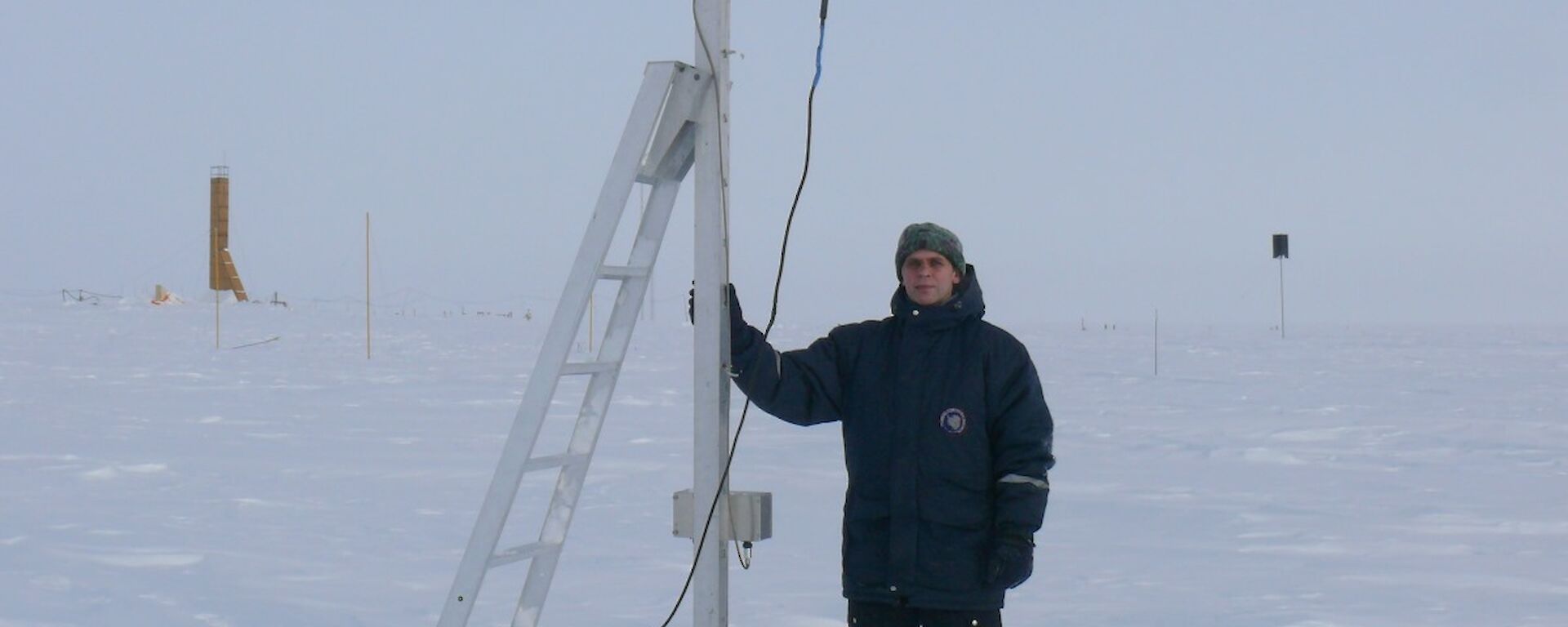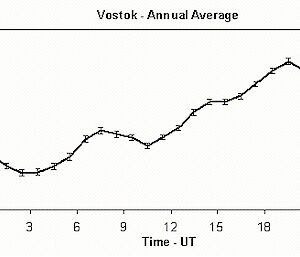During the IPY the Solar Linkages to Atmospheric Processes (SLAP) investigated the links between changes in solar output and weather and climate.
Thunderstorms and lightning strikes drive electricity around the world and form part of a global ‘atmospheric electric circuit’ that flows between the ground and the lower reaches of the ionosphere — about 80km up. The circuit is completed when the current trickles back to Earth, in regions remote from thunderstorm activity, such as Antarctica. The flow of current around the world is modulated by cosmic rays, which control atmospheric conductivity; while cosmic rays are in turn modulated by the solar wind (charged particles from the sun).
Meteorological and solar variability influences on the atmospheric circuit are well established. The unanswered question is whether the electric circuit actively links solar variability and weather, or if it responds passively to both meteorological and solar variations. Understanding this interaction is important because changes in the global electric circuit, caused by solar variability, could alter the conditions under which thunderstorms develop.
Through the SLAP project, scientists from the Australian Antarctic Division and the Arctic and Antarctic Research Institute in Russia, measured the atmospheric circuit high on the Antarctic plateau at Vostok, near the centre of East Antarctica. Instruments were also deployed at three sites in West Antarctica by the British Antarctic Survey and at the French-Italian station, Concordia (at Dome C), by international collaboration.
The project scientists recently published evidence supporting a day-to-day meteorological variation linked to solar activity, and showing that the process operates via the atmospheric electric circuit — i.e. there is an active link between the electric circuit, solar variability and weather. This supports a new link between solar variability and climate in addition to solar irradiance and UV ozone modulation described in the Intergovernmental Panel on Climate Change Fourth Assessment Report.
Thunderstorms and strongly electrified clouds dominate the global atmospheric circuit away from the polar regions. Accurately measuring this globally-uniform component of the atmospheric electric circuit could enable scientists to monitor changes in global thunderstorm activity as the world warms.
A model of the global electric circuit has been developed by collaborators at the University of Texas, Dallas, incorporating variations in cosmic rays, energetic particles, natural radioactivity and aerosols. Outputs from the model will be compared with measured atmospheric circuit responses to these variations, to refine understanding of the processes involved.
The Vostok and Concordia data sets will ultimately reside in the Australian Antarctic Data Centre and the Global Circuit Project of the University of Houston. Data from the western Antarctica deployments will be available via the British Antarctic Survey Data Access and Browsing System (DABS).
As a number of instruments were deployed late in the formal IPY program, scientists will continue collecting data over at least the next two years to address their research goals. Updates on the project are available through the SLAP website.




